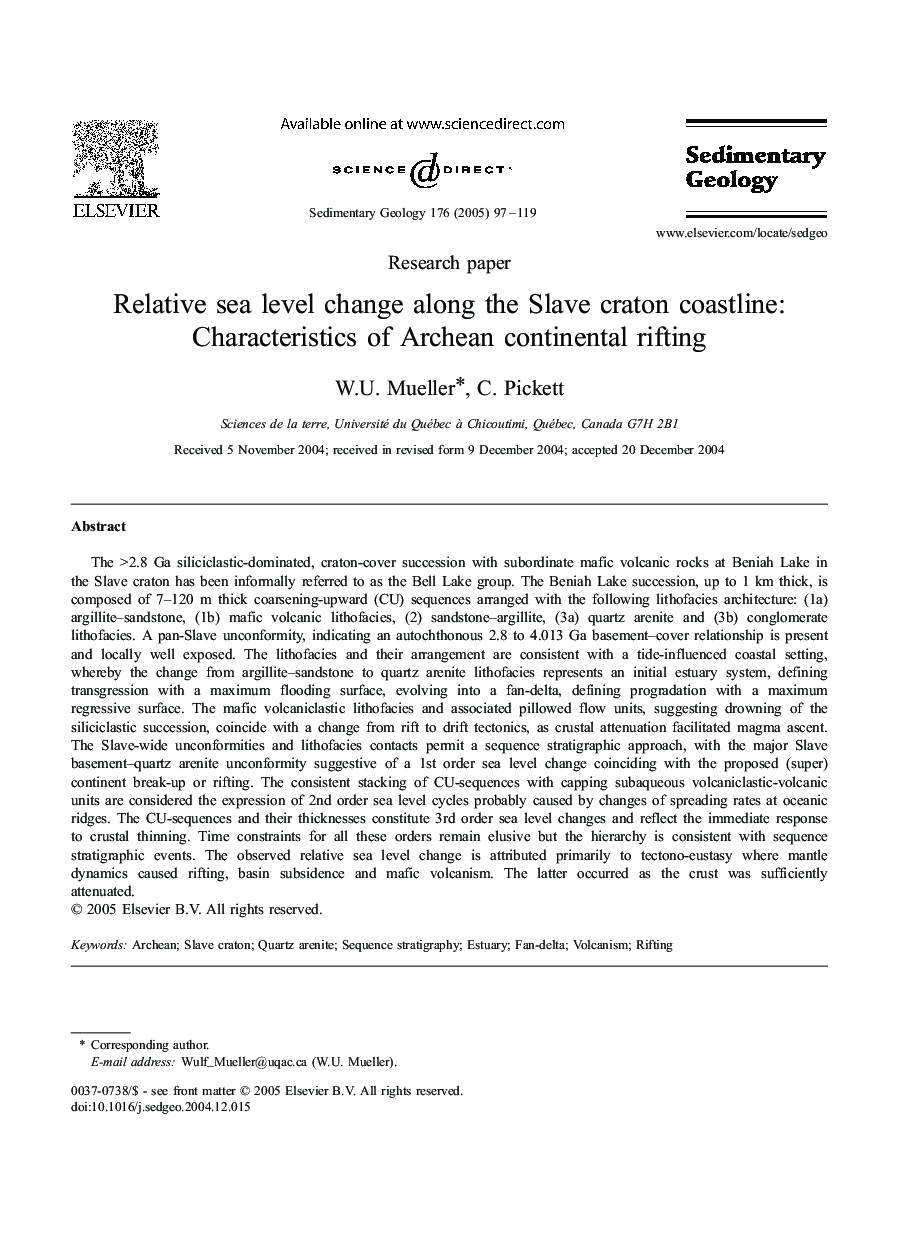| کد مقاله | کد نشریه | سال انتشار | مقاله انگلیسی | نسخه تمام متن |
|---|---|---|---|---|
| 9526212 | 1636207 | 2005 | 23 صفحه PDF | دانلود رایگان |
عنوان انگلیسی مقاله ISI
Relative sea level change along the Slave craton coastline: Characteristics of Archean continental rifting
دانلود مقاله + سفارش ترجمه
دانلود مقاله ISI انگلیسی
رایگان برای ایرانیان
کلمات کلیدی
موضوعات مرتبط
مهندسی و علوم پایه
علوم زمین و سیارات
فرآیندهای سطح زمین
پیش نمایش صفحه اول مقاله

چکیده انگلیسی
The >2.8 Ga siliciclastic-dominated, craton-cover succession with subordinate mafic volcanic rocks at Beniah Lake in the Slave craton has been informally referred to as the Bell Lake group. The Beniah Lake succession, up to 1 km thick, is composed of 7-120 m thick coarsening-upward (CU) sequences arranged with the following lithofacies architecture: (1a) argillite-sandstone, (1b) mafic volcanic lithofacies, (2) sandstone-argillite, (3a) quartz arenite and (3b) conglomerate lithofacies. A pan-Slave unconformity, indicating an autochthonous 2.8 to 4.013 Ga basement-cover relationship is present and locally well exposed. The lithofacies and their arrangement are consistent with a tide-influenced coastal setting, whereby the change from argillite-sandstone to quartz arenite lithofacies represents an initial estuary system, defining transgression with a maximum flooding surface, evolving into a fan-delta, defining progradation with a maximum regressive surface. The mafic volcaniclastic lithofacies and associated pillowed flow units, suggesting drowning of the siliciclastic succession, coincide with a change from rift to drift tectonics, as crustal attenuation facilitated magma ascent. The Slave-wide unconformities and lithofacies contacts permit a sequence stratigraphic approach, with the major Slave basement-quartz arenite unconformity suggestive of a 1st order sea level change coinciding with the proposed (super) continent break-up or rifting. The consistent stacking of CU-sequences with capping subaqueous volcaniclastic-volcanic units are considered the expression of 2nd order sea level cycles probably caused by changes of spreading rates at oceanic ridges. The CU-sequences and their thicknesses constitute 3rd order sea level changes and reflect the immediate response to crustal thinning. Time constraints for all these orders remain elusive but the hierarchy is consistent with sequence stratigraphic events. The observed relative sea level change is attributed primarily to tectono-eustasy where mantle dynamics caused rifting, basin subsidence and mafic volcanism. The latter occurred as the crust was sufficiently attenuated.
ناشر
Database: Elsevier - ScienceDirect (ساینس دایرکت)
Journal: Sedimentary Geology - Volume 176, Issues 1â2, 29 April 2005, Pages 97-119
Journal: Sedimentary Geology - Volume 176, Issues 1â2, 29 April 2005, Pages 97-119
نویسندگان
W.U. Mueller, C. Pickett,